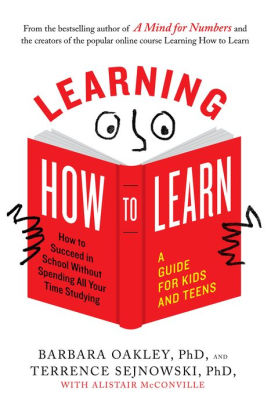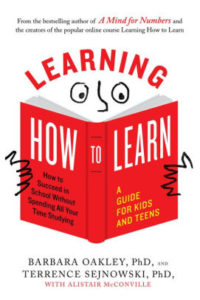

Oakley and Sejnowski are the co-creators of the largest online course also titled “Learning How to Learn.” Oakley is a professor of engineering at Oakland University in Rochester Michigan. Sejnowski is a neuroscientist, Howard Hughes Medical investigator and professor at the Salk Institute and the University of California, San Diego.
Fittingly, at the outset, the authors explain that one helpful learning strategy is previewing what you will read. They suggest being an active reader by taking notes and asking and answering questions while reading.
Oakley, et. al. explain that there is a network in the brain that supports focused thinking and a separate network that supports diffuse thinking. Typically, we do not engage these two networks simultaneously, but both are important. As such, we need to focus intently on our work sometimes and reward ourselves with opportunities to engage the diffuse-thinking network at other times. Procrastinating can interfere with high quality learning because we run out of time to study. The Pomodoro Technique, in which one eliminates distractions, sets a timer for 25 minutes, focuses intently on one task for that whole time, and then rewards oneself with a diffuse thinking task (like exercise), can be effective for combatting procrastination. The authors suggest also starting with the tasks you least want to do and setting a time to stop working for the day to promote focus while working.
The authors explain that brain cells or “neurons” and the paths of communication between them form our thoughts. The more we activate these paths of communication the stronger they become and the better we learn. They explain that our working memory capacity—the ideas we hold in mind at one time—is limited, but our long-term memory ability is unlimited. Our goal should be to move information efficiently from working memory to long-term memory. As such, the authors suggest that rather than studying by merely rereading, we should actively pull ideas out from the to-be-learned material. We can use songs, metaphors, and analogies to help form connections between ideas and support long-term memory. We should clarify ideas that we do not understand by asking for help or searching the internet. To remember ideas we should pay attention when absorbing information, avoid tricking ourselves into thinking we know material that we do not (i.e., do not look at the answers at the back of the book), and construct visual representations of ideas. We should also avoid multi-tasking, which dampens our working memory ability. The authors suggest other helpful strategies such as varying the places you study, relying on multiple senses to reinforce learning, and journaling about what you have learned and what you still need to study.
Oakley, et. al. advocate for involvement in clubs or activities that relate to your interest and spending time with people who can stimulate your thinking. They also explain that learning about topics that are very different from one’s interest can actually improve one’s understanding in the domain of interest. New subjects or skills may not feel fun at first, but with dedicated effort they may become enjoyable.
The authors mention the importance of getting sufficient sleep, exercising regularly, and eating a healthy diet.
They offer test-taking tips. For example, they suggest breathing deeply and reframing anxious feelings during testing as feelings of excitement about the opportunity to show what you know. They suggest starting a test by glancing at the hardest problems so that you can passively think about those challenging questions while working on simpler ones.
The authors conclude on an optimistic note. Just because a student has been performing poorly in school does not mean he or she will always struggle. Having a positive attitude about learning, especially when paired with knowledge about ways to learn effectively, can carry a student far. Appreciating that learning is an empowering experience and that it is a privilege that many young people do not have can help students make the most of their learning.
Oakley, B., Sejnowski, T., & McConville, A. (2018). Learning How to Learn: How to Succeed in School Without Spending All Your Time Studying.New York, NY: Tarcher Perigee.




